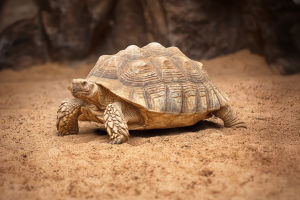Have you ever heard of the stoat? This little carnivore is one of nature’s most skilled hunters. Also known as the ermine, the stoat (Mustela erminea) belongs to the weasel family and is often underestimated due to its small size and adorable appearance.
But don’t be fooled—this animal is a fierce and efficient predator. Stoats have earned a reputation for their cunning hunting skills and remarkable adaptability.
In the wild, the stoat is known for its ability to survive in a variety of environments, from dense forests to grassy meadows and even snowy landscapes. Despite its small size, the stoat can take down prey much larger than itself, including rabbits and birds. In fact, its agility and quick reflexes make it one of the most efficient hunters in the animal kingdom.
Adaptable and Resourceful: A Master of Survival
One of the stoat's most impressive traits is its adaptability. Whether it’s navigating through the dense underbrush of forests or chasing prey across snowy fields, the stoat is built for survival. Its sleek, slender body and sharp claws allow it to move swiftly and stealthily, which helps it hunt down small mammals, birds, and insects.
Another fascinating feature of the stoat is its fur, which changes with the seasons. During the summer months, the stoat’s coat is brown with a white underside, but in the winter, it transforms into a stunning all-white coat with a black-tipped tail. This seasonal change not only helps the stoat blend into its environment, but also plays a role in its hunting strategy, allowing it to remain nearly invisible against the snowy backdrop during colder months.
Habitat and Distribution: Where Stoats Call Home
The stoat is found across a wide range of habitats, from the northern parts of Asia to Europe and North America. It is especially common in areas with abundant prey, such as forests, grasslands, and even the outskirts of human settlements. While it thrives in both temperate and subarctic climates, the stoat can also be found in mountainous regions, where its incredible agility makes it well-suited for navigating steep terrain.
Stoats are typically solitary creatures, and each one claims its own territory, which it fiercely defends. They are territorial hunters, marking their range with scent markings to warn other stoats to stay away. This solitary lifestyle, combined with their strong territorial instincts, allows stoats to maintain control over the areas where they hunt and breed.
The Stoat’s Diet: Nature's Skilled Hunter
The stoat is an opportunistic feeder, meaning it will take advantage of any available food sources. Its diet primarily consists of small mammals such as voles, mice, and rabbits, but it will also hunt birds, insects, and amphibians when the opportunity arises. Stoats are known for their impressive hunting techniques, which often involve stalking their prey silently and pouncing at the perfect moment.
What makes the stoat’s hunting style unique is its ability to overpower prey larger than itself. It uses its sharp teeth to pierce the skull of its victim, delivering a swift and lethal strike to the brain. After catching its prey, the stoat drags it to a secluded area to consume it, ensuring no other predators can steal its meal.
Reproduction and Lifespan: The Stoat's Life Cycle
Stoats breed once a year, typically in late spring or early summer. After a gestation period of about 9-10 months, female stoats give birth to a litter of 6-12 kits. These kits are born blind and helpless, but they grow quickly, developing their hunting skills under the watchful eyes of their parents. Stoats are highly protective of their young, with both parents sharing in the task of raising the litter.
Stoats have a relatively short lifespan, typically living 5-8 years in the wild. However, their lives are often cut short due to predators, disease, or accidents. Despite this, stoats are incredibly resilient and can thrive in a variety of environments, making them one of the most successful species in the weasel family.
The Stoat’s Role in the Ecosystem
Stoats play a vital role in maintaining balance within their ecosystem. As apex predators of small mammals, they help control populations of rodents, which can otherwise become overabundant and damage crops. By keeping these populations in check, stoats contribute to the overall health of the environment, ensuring that plants and other species have the space and resources they need to thrive.
Additionally, the stoat’s presence helps maintain the balance of the food chain. As both predator and prey, stoats are an essential part of the complex web of life, with their hunting habits influencing the populations of other animals.
Why We Should Care About Stoats
Stoats may be small, but they are mighty. These remarkable creatures are an important part of the natural world, and it’s essential that we appreciate theirrole in the ecosystem. Protecting their habitats and ensuring that they continue to thrive is crucial for maintaining the delicate balance of nature.
By understanding more about stoats and their fascinating lifestyles, we can gain a deeper appreciation for the complexities of the natural world and the incredible creatures that call it home.
The stoat may be a stealthy hunter, but it is also a key player in maintaining the balance of nature. Have you ever observed a stoat in the wild? If so, share your experience with us—it's always exciting to hear from fellow nature enthusiasts!
The Stoat - a fearless acrobat and rabbit hunter! Interesting facts about Stoats
Video by Wonders of the World


